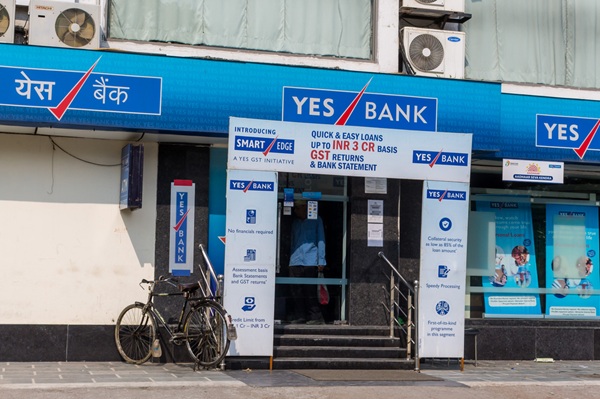.png)
Gurumurthy, ex-central banker and a Wharton alum, managed the rupee and forex reserves, government debt and played a key role in drafting India's Financial Stability Reports.
November 11, 2025 at 8:48 AM IST
Few faiths in India are as disciplined or as quietly devout as the belief in the Systematic Investment Plan. Every month, millions of salaried Indians perform a ritual of financial virtue — an automatic debit, a silent prayer, and a small sense of progress.
“Mutual Funds Sahi Hai,” the national gospel proclaims, and the people believe.
Once dependent on divine intermediaries, Indians now turn to mutual fund distributors, influencers, and apps that preach the new gospel: the magic of compounding, the power of rupee-cost averaging, and the promise of eventual wealth, if one just keeps the faith.
The March of the Faithful
High valuations? Weak fundamentals? It doesn’t matter. The algorithm demands consistency; investors demand reassurance.
What began as a mechanism to reduce volatility has evolved into an engine that often amplifies it. Market moves are increasingly driven not by conviction, but by compulsion. When buying becomes reflexive, the market’s rhythm is dictated not by analysis but by auto-debit.
When Discipline Turns to Automation
Large-cap funds mimic benchmarks; small-cap funds absorb surging inflows despite frothy valuations. Even when managers worry privately, their mandate is clear: deploy, don’t delay.
This polite, persistent habit builds bubbles not through mania but through mechanical obedience.
A Familiar Global Story
Japan’s NISA programme (but this one offers capital gains and dividend tax exemptions) and the Bank of Japan’s ETF purchases created similar liquidity circuits that kept even weak companies afloat. The UK faced its own reckoning in 2022, when automated pension models nearly crashed the gilt market during a bout of volatility.
Across geographies, the pattern is the same: habitual inflows create habitual valuations. When liquidity feels permanent, rational pricing disappears. Markets appear stable — until they aren’t.
The Self-Reliance Illusion
It’s an appealing story, but a fragile one. Liquidity follows income, not ideology. The same household that invests ₹5,000 faithfully in good times will pause its SIP when inflation rises, job security fades, or EMIs tighten.
When that happens, the market that once thrived on automatic inflows may suddenly struggle for breath. The so-called domestic “liquidity floor” can quickly turn from solid to sand.
The Regulator’s Dilemma
Yet the problem is structural: funds must invest incoming money quickly, regardless of price or opportunity. That’s leading to subtle but significant distortions:
- Concentration risk: The same set of large “safe” stocks attract most inflows, making indices top-heavy and less responsive to valuation signals.
- Liquidity illusion: Funds appear stable as long as inflows persist; redemptions would reveal underlying fragility.
- Behavioral complacency: Retail investors now treat risk as myth, comforted by the mantra of “long-term compounding.”
SEBI’s role must evolve from financial educator to referee of systemic behavior. The goal isn’t to stop investors from participating, but to ensure they remain conscious participants, not automated ones.
Some reforms could help:
- Transparency: Mandate monthly disclosure of where SIP money is flowing by sector and theme.
- Dynamic SIPs: Encourage models where contributions adjust with valuations - more when markets are cheap, less when euphoric.
- Flexibility for fund managers: Permit higher cash holdings during overvalued phases without penalizing “underperformance.”
- Stress tests: Require fund houses to model what happens if SIP inflows drop sharply for several months.
The risk isn’t volatility, but an illusion of permanence.
The Bubble of Good Intentions
But compounding is not a moral force; it’s mathematical. It doesn’t forgive overvaluation, no matter how disciplined the investor. Even the holiest SIP cannot redeem an overpriced market.
This moral economy of investing mirrors religion: regular rituals, unquestioned faith, and a priesthood that preaches calm. “Stay invested,” the sermons go - no matter the context or the price. SIPs have replaced savings accounts not just in function but in psychology, turning cautious savers into ritual investors who see participation itself as progress.
The Final Irony
Faith-based finance can look benign, until the auto-debits stop. When that day comes, SEBI may need to ask not whether investors lost confidence, but whether confidence itself had been automated.
This is not an argument against SIPs. They remain a vital tool for democratizing wealth creation. But they work best when investors remain aware of why they invest, at what price, and for what horizon.
The path to financial maturity lies not in monthly ritual, but in periodic reflection. Because in markets, as in faith, unexamined belief eventually becomes folly.




